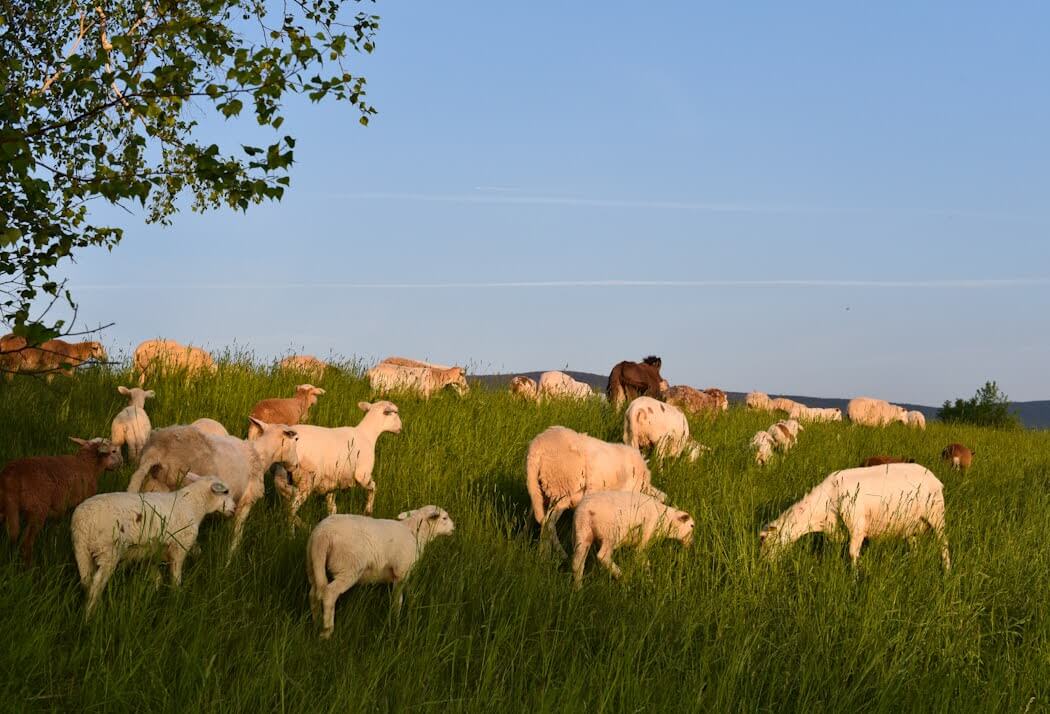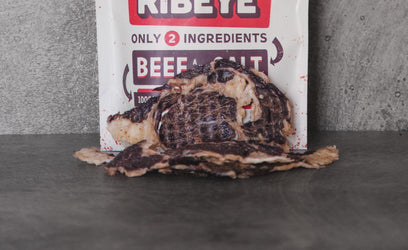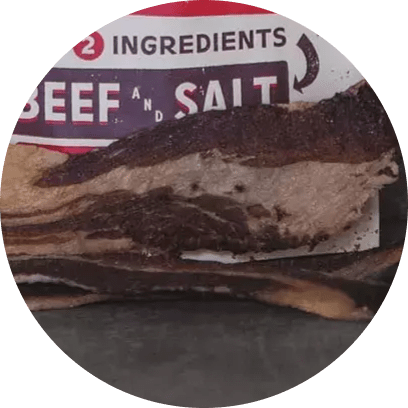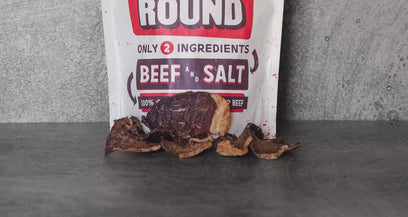THE CARNIVORE DIET BENEFITS





In a world where the buzzwords "sustainability," "eco-friendly," and "organic" are increasingly prevalent, one term stands out as a game-changer: regenerative agriculture.
This isn't just a passing trend or a catchy phrase; it's a pivotal shift in the way we grow our food, promising profound benefits for our planet and our health. Central to these benefits is biodiversity, the beautiful, complex web of life that weaves us all together.
But what exactly is meant when we talk about regenerative agriculture biodiversity? More importantly, how do they intertwine to create healthier soils, more resilient ecosystems, and even more nutrient-dense foods?
If you're curious to learn more, you're in the right place. In this article, we will delve deep into the heart of regenerative agriculture and its relationship with biodiversity, offering insight and understanding that may very well change the way you look at your dinner plate.
Read on to discover how your food choices can contribute to a more vibrant, resilient, and diverse world. First and foremost, let’s set the stage by pulling the curtain back on a more resilient, sustainable method of farming.
What is Regenerative Agriculture?
So, what is regenerative agriculture? This is a farming method that goes beyond sustainability. Its core principle is to revitalize the health and vitality of the soil, rather than just maintaining it.
This approach includes practices such as cover cropping, no-till farming, crop rotation, and organic composting. The ultimate goal? To restore soil health, sequester carbon, improve water cycles, and foster resilient ecosystems.
We’ll talk more about what goes into regenerative agriculture techniques later on, along with why this farming method is so profound. But first, we need to talk about the other side of the coin in today’s conversation: biodiversity.
What is Biodiversity
Biodiversity, short for biological diversity, refers to the variety of life found on Earth. It spans all organisms, from the smallest bacteria to the largest mammals, and the ecosystems they form. This includes genetic diversity within species, diversity among species, and diversity of ecosystems.
Biodiversity is crucial because it contributes to the overall health of the planet, and in turn, our health and wellbeing. It enables ecosystems to recover from disturbances, resist disease, purify air and water, and provide us with food, medicine, and raw materials.
When you put the two phrases together, you get regenerative agriculture biodiversity. This speaks to the way in which regenerative farming - through its more land-friendly tactics - leads to enhanced biodiversity.
And, as a result, you get a more sustainable food supply - one that is resilient to change, one that is more profitable for the farmer, and one that offers a suite of other benefits along the way. So, now that we’ve got you up to speed on the basics, let’s take a closer look at the interplay between regenerative agriculture and biodiversity.
The Interplay Between Regenerative Agriculture and Biodiversity
The relationship that regenerative agriculture and biodiversity share is one that is deeply intertwined, each reinforcing and amplifying the other. By prioritizing soil health and using specific farming techniques, regenerative agriculture encourages an environment where a variety of organisms can thrive. And it all starts with the soil.
Soil Health and Biodiversity
You’ll hear us say one phrase over and over - restoring our lands. What we’re talking about here is prioritizing soil health. This is one of the core tenants of regenerative farming.
But what makes healthy soil? It's about more than just dirt. It's teeming with life—countless microorganisms like bacteria, fungi, and other tiny creatures that are the engine of fertility. These microorganisms form symbiotic relationships with plant roots, enhancing nutrient absorption and helping the plants defend against diseases.
A single spoonful of healthy soil can contain more organisms than there are humans on Earth. This rich biodiversity below ground plays a vital role in sequestering carbon and maintaining the planet’s delicate carbon cycle. Healthier soil also means healthier crops that are more resilient to pests and disease, reducing the need for synthetic pesticides and fertilizers.
Farming Practices that Boost Regenerative Agriculture Biodiversity
What exactly goes into regenerative agriculture biodiversity, you ask? Farmers can employ a range of practices designed to boost biodiversity. Here are a few key ones:
- Crop rotation and diversity: Instead of growing one type of crop (monoculture), farmers rotate crops and grow a variety of crops together (polyculture). This method reduces pest and disease pressures, enhances soil fertility, and promotes a diverse ecosystem.
- Cover cropping: By planting cover crops on regenerative farms during off-seasons, farmers can prevent soil erosion, suppress weeds, enhance soil fertility, and provide habitat for beneficial organisms. Our complete guide linked previously can walk you through this process more in-depth.
- No-till farming: Conventional farming often involves tilling, or turning over the soil, which can disrupt soil structure and harm beneficial organisms. No-till farming leaves the soil undisturbed, promoting the health and biodiversity of soil organisms.
- Holistic livestock management: Animals, when managed in ways that mimic their natural behaviors, can improve soil health and biodiversity. For instance, rotational grazing where livestock are moved around to prevent overgrazing, helps to distribute manure evenly and encourages plant diversity. You can learn more about this in our article on regenerative agriculture grazing or regenerative cattle farming.
The commitment to these practices does more than just create healthy soil. It encourages a thriving ecosystem teeming with life, from the smallest soil microbe to the largest farm animal. As we'll explore in the next sections, this symbiosis between regenerative agriculture and biodiversity has far-reaching benefits for our planet and our health.
Why Regenerative Agriculture Biodiversity is Important
Now, you realize that there is a strong, positive relationship between biodiversity and regenerative agriculture. The question now, is, why is regenerative agriculture important? You know that it leads to healthier soil, but what are the more specific implications of all this?
There are four primary reasons we should advocate for more biodiversity in our food supply chain:
- Restores Our Lands: Regenerative agriculture can help restore our lands. Through photosynthesis, plants draw carbon dioxide (a greenhouse gas) out of the atmosphere and store it in the soil, a process known as carbon sequestration. The healthier and more biodiverse the soil, the more carbon it can store. This also improves the soil's water-holding capacity, reducing the impact of droughts and floods.
- Food Security: Biodiversity is crucial for food security. Growing a wide variety of crops reduces the risk of food loss due to pests, diseases, or greenhouse gasses. If one crop fails, others can still thrive. Plus, more diverse crops provide a range of nutrients essential for human health.
- Resilient Ecosystems: Biodiversity makes ecosystems more resilient. A variety of plants, animals, and microbes interacting in a system can better adapt to changes and recover from disturbances. This resilience is critical in the face of an uncertain climate future.
- Economic Stability for Farmers: Diverse farming systems can offer economic stability. For example, if one crop doesn't perform well in a given year, others might, offsetting potential losses. Plus, practices like cover cropping can save farmers money on inputs like chemical fertilizers and pesticides.
The best part? This is just the biodiversity side of things we’re talking about. There are so many other powerful implications for regenerative farming - from the elimination of harmful synthetic inputs to more opportunities for farmers to earn profit.
So, read our detailed guide on the benefits of regenerative agriculture to learn more about why this approach to farming is so profound. For now, let’s talk about some of the challenges associated with implementing regenerative farming.
Challenges to Implementing Regenerative Agriculture
Despite its clear benefits, there are several challenges to implementing regenerative agriculture. Commercial agriculture has a hold of our food supply chain, and there are a few reasons why the process of shifting this landscape is going to take time:
- Economic Factors: Transitioning from conventional to regenerative farming practices can be financially challenging for farmers. There can be a period of reduced yields during the transition, and the benefits of regenerative farming, while significant, often manifest over the long term. Still, the long-term profitability of these farms outweighs the initial setbacks.
- Lack of Knowledge and Training: There is a need for more education and training in regenerative farming practices. Most agricultural education and research still focus on conventional methods. While we have a detailed guide on how to do regenerative agriculture, it’s worth investing in professional guidance from farmers who have been there and done that.
- Market Demand: Consumers often aren't aware of the benefits of regeneratively grown food, and may not be willing to pay a premium for it. Greater consumer education is needed to drive demand. This is slowly but surely shifting, as more and more consumers are realizing the importance of knowing what they eat. This is where you can really make a difference, by shopping smarter and putting your money where your mouth is.
- Policy and Subsidy Structures: Agricultural policies and subsidies often favor conventional farming. Changing these policies to support regenerative agriculture can be a slow and complex process. Thus, making your voice heard is a significant way to show your support for regenerative agriculture. More on that in a moment.
These challenges aren't insurmountable, but they require concerted effort and collaboration from all sectors - farmers, consumers, businesses, researchers, and policymakers. As we'll see in the next section, each of us can play a part in supporting the shift towards regenerative agriculture biodiversity it fosters.
How Consumers Can Support Biodiversity Through Regenerative Agriculture
As consumers, we wield more power than we often realize. Through conscious choices, we can support the farmers and companies pioneering regenerative agriculture, fostering biodiversity in the process. Here is a quick breakdown on how to support regenerative agriculture right here, right now:
- Buy Regeneratively Grown Products: One of the most direct ways to support regenerative agriculture is to buy products grown using these practices. While these products may sometimes cost more, the price reflects the true cost of food that doesn't degrade our planet but helps to restore it.
- Look for Transparency: Choose brands that are transparent about their sourcing and farming practices. Companies like Carnivore Snax make it a point to source from regenerative farms, supporting biodiversity and soil health with every purchase.
- Support Local Farmers: Local farmer's markets are great places to find regeneratively grown produce. You get the chance to speak directly with farmers, learning about their practices and supporting their work.
- Educate Yourself and Others: Learn more about regenerative agriculture and share your knowledge with others. The more people understand its benefits, the more market demand will grow, encouraging more farmers to transition to these methods.
Now, if you’re looking to put your money where your mouth is - and get one of the best low carb snacks the world has to offer - you can head over to our online storefront and try our meat chips. These meat snacks, as the name implies, contain just two ingredients: meat and salt. And yet, they taste amazing as they melt in your mouth.
Because we only source our meat from the most elite, ethical regenerative farms in the nation, you can rest assured you’re doing your part to overhaul your snack arsenal with treats that are good for you as they are for our lands.
So, see what you’ve been missing out on all this time over at Carnivore Snax today! From ribeye chips to steak chips, lamb chips, beef chips, brisket chips, chicken chips, and pork chips, your new favorite variety is just a few clicks away.
Wrapping Up Our Guide to Regenerative Agriculture Biodiversity
Biodiversity is a cornerstone of life on Earth, and regenerative agriculture biodiversity provides a practical, potent solution to preserving and enhancing it. As we've explored in this article, the practices associated with regenerative agriculture not only enrich our soil but also sequester carbon, enhance food security, and support resilient ecosystems.
The challenges to widespread adoption of regenerative agriculture are real, yet they represent an opportunity for each of us to effect change. By choosing products grown in regenerative systems, we can vote with our dollars for a healthier, more biodiverse planet.
The question isn't so much whether we can afford to embrace regenerative agriculture, but rather, can we afford not to? As consumers and inhabitants of this planet, the choice is ours to make. Let's make the one that celebrates and supports the glorious web of life that sustains us all.
Whether you’re on keto or carnivore and are looking for the best carnivore snacks, or you simply want to show your support for regenerative agriculture while getting delicious, nutritious snacks you can feel good about - it’s time to do some shopping at Carnivore Snax!























